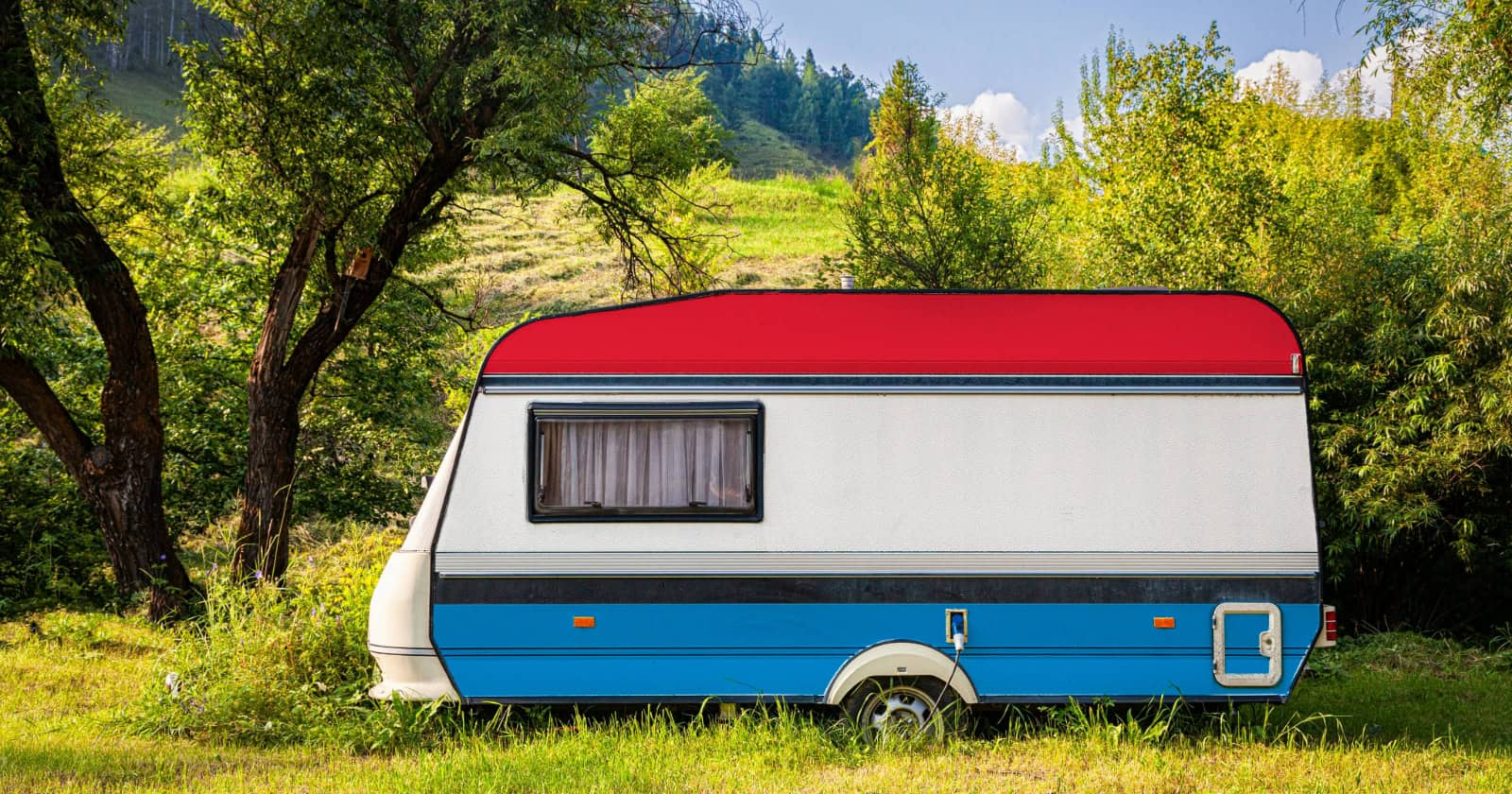
RV Delamination: What Is It & How To Repair It
If you’re new to the RV world, you may have heard of the dreaded RV delamination. This problem can lower your resale value, ruin the siding, and lead to bigger problems down the road. Understanding what RV delamination is, how to fix it, and how to prevent it is important for every owner to know.
Essentially, RV delamination occurs when the outer layer of your camper (usually made of fiberglass or gel coating) separates from the structural layer underneath. Water can then seep into the cracks and wreak havoc on the vehicle. Delamination often leads to warped siding, bubbled walls, and water damage.
This problem looks bad on the outside, but the interior damage is even worse. Luckily, there are ways to fix this problem or prevent it from happening. As long as you are watchful and take the proper precautions, delamination doesn’t have to ruin your RV.
What is RV delamination?
We already covered the basics above, but if you want to know how to fix and prevent delamination, it’s important to understand how it happens. Band-aid solutions won’t fix anything in the long term if you don’t get at the root of the problem.
Lamination is a term that’s used to describe an item with multiple layers. In the case of RVs, lamination refers to the construction of the siding. There are usually a few layers including a fiberglass exterior, plywood, styrofoam, insulation, and the interior RV wall.
Even though the exterior material is pretty tough, the inside can become dented or damaged over time. If the plywood begins to come loose from the outer layers, that’s where RV delamination begins.
Pockets of air or cracks in the siding lead to separation. If water or debris seeps into these openings, this can speed up the process. Mold can begin to grow inside the walls and the outer layer will begin to develop bubbles and irregularities. If you see an RV with warped siding, it’s in a state of delamination.
THE DELAMINATION DAMAGE PROBLEM IS MORE THAN COSMETIC
Even though this may seem like a cosmetic issue, delamination is a huge problem for RVs. It can even become dangerous if it’s left unchecked for too long.
Delamination weakens the structure of your vehicle, invites water damage, and can lead to stubborn growths of mold. If water begins to weaken the plywood in the vehicle, the whole thing will be unstable.
Having a bumpy exterior can also make your RV less aerodynamic. This can lead to swaying and lower mpg ratings.
You can identify delamination visually if it gets bad enough. Another way to test is by tapping the siding and listening to see if it sounds hollow. If any part of the siding feels spongy, that’s a dead giveaway. Be especially careful to check for delamination if you’re buying a used RV.
If the RV delamination is too severe, it can be hard to repair. Sometimes, it’s not possible unless you completely strip away the walls and replace the siding. But if you catch it early on, there are things you can do to fix this problem.
How to repair RV delamination
Severe RV delamination is difficult to fix, especially if water damage has set in. If the plywood has begun to rot, the only way to repair it is to completely strip down the walls and replace them with a fresh structure.
This should only be done by professionals because amateur solutions are likely to do more harm than good. However, if the process has only just begun and hasn’t gotten too far, there are a few fixes that owners can try.
The first option is a delamination repair kit. These cost about $80-150 and come with a high-strength bonding agent. This can be used to reseal the fiberglass to the underlying layers of the RV. The new bonding material is marine-grade, so it will hold up well if it’s exposed to water. Most kits also come with syringes that can be used to fill hard-to-reach spots.
THE FINAL DELAMINATION REPAIR STEPS
Once you’re satisfied with the level of repair you’ve done, it’s important to seal up any cracks and seams in the RV exterior. Using a good caulk is essential, and you can provide an extra layer of protection by using a protective RV wax/coating. This will help repel water and provide a layer of separation between the fiberglass and the outside world. Do a good job and you can even sell your RV with delamination repairs. Just be upfront when selling, and let potential buyers know about what you did to fix the problem.
If the damage is too severe to fix with a delamination kit, you may need to turn to professional help. This is a big job that often costs at least $10,000. Many people find that these repairs are not worth the cost and give up the RV as a lost cause. This is sad, but sometimes it’s the practical choice if the damage is too bad. However, some owners want to see it through to the end.
Some RV owners with a lot of tools, time, and know-how have been successful at repairing delamination damage by themselves, but this is impractical for most people. If you’d like to see one owner’s guide on how he fixed his camper, check it out here.
How to prevent delamination
With any luck, you’ll never have to deal with RV delamination in the first place. Most RVs are well-made and can hold up to the wear and tear of a life on the road. Delamination is certainly something to be mindful of, but it’s not a danger that every RV owner faces.
There are things you can do to prevent this problem before it begins. The main cause of delamination is cracks or seams in the exterior that let water in. If you’re diligent and frequently apply a lap sealant to these areas, you’ll vastly improve your chances of avoiding delamination. Dicor products are perfect for this purpose!
You should also take measures to keep your RV clean and dry. Use a waterproof cover whenever the RV is not being used, and try to store it indoors if possible. Frequently check the exterior with your eyes and hands so you can identify any weak spots.
If you spot any holes in your fiberglass, repair them as soon as possible! Fiberglass is much easier to fix compared to the damage it will cause if water gets in and causes delamination. Keep your RV protected by using protective coatings and waxes as well. The more protection you can give the surface, the better your chances are of avoiding RV delamination.
Make sure you keep track of all your RV maintenance and repairs with an online tool such as RV LIFE Maintenance from RV LIFE. Not only can you keep all of your documents in one place, but you’ll also receive timely reminders when maintenance is due to help you avoid costly repairs and potentially serious accidents.
Related articles:



